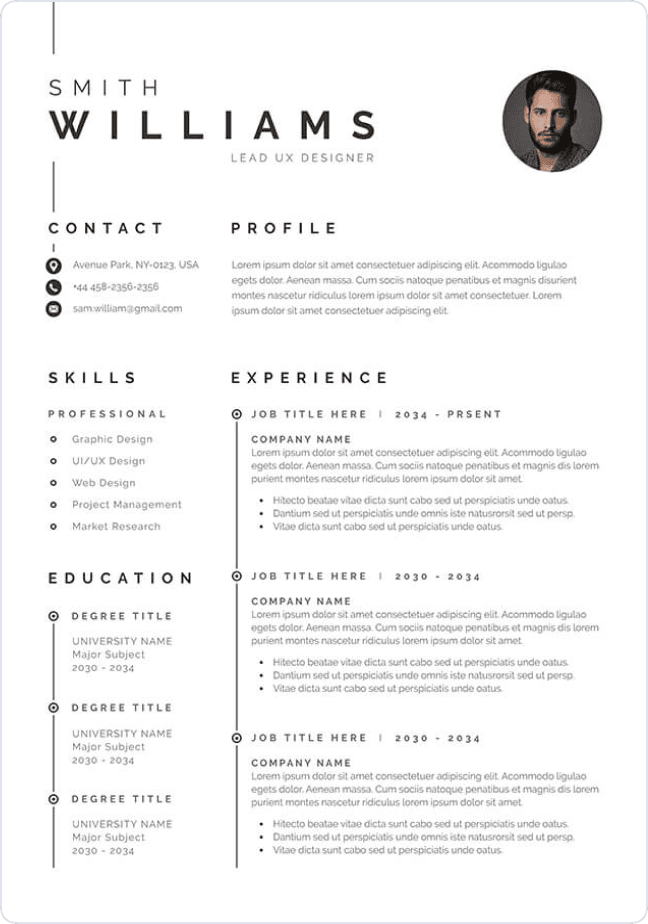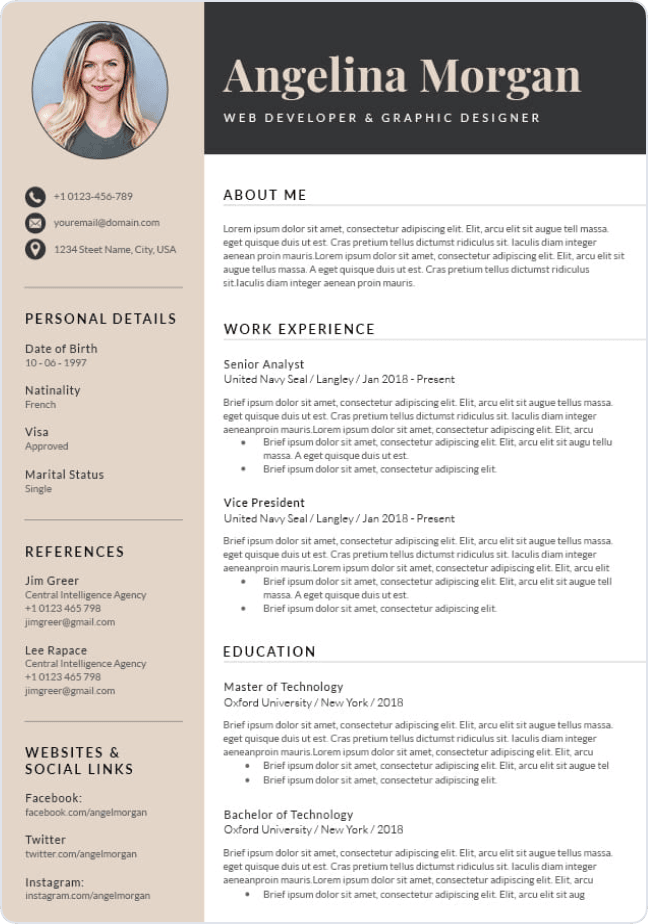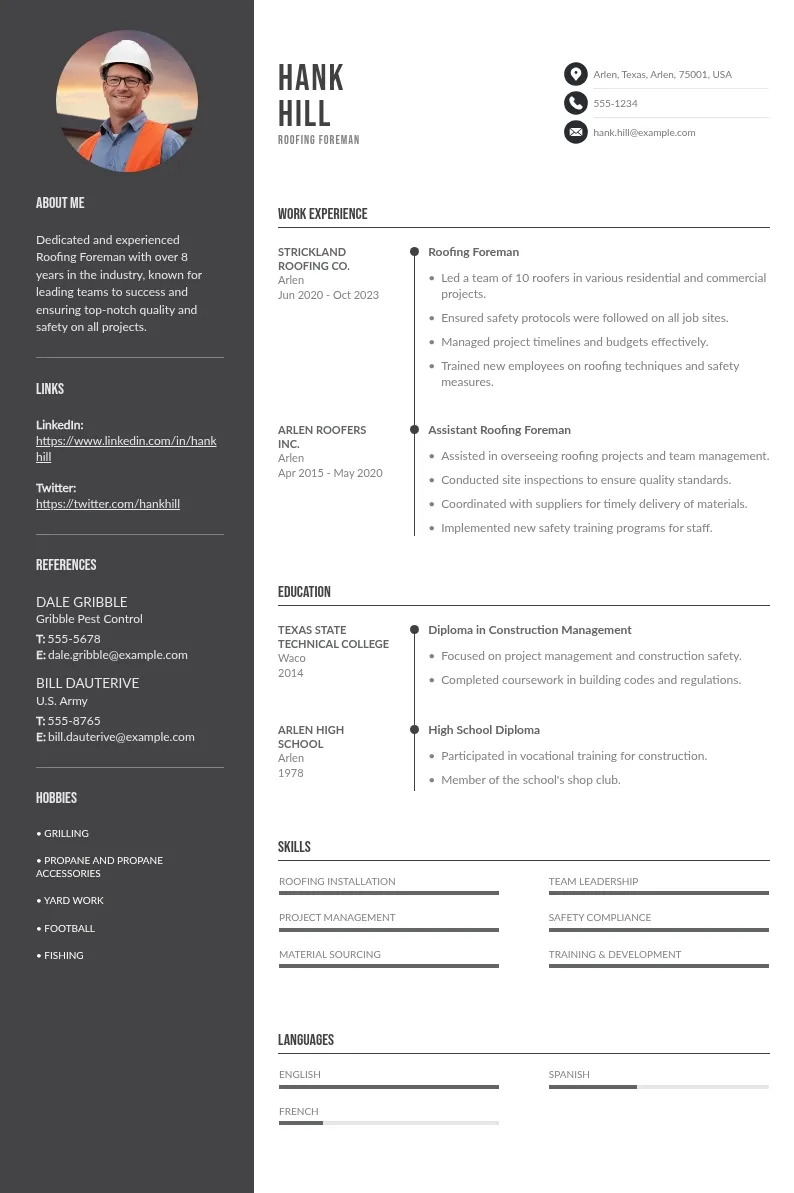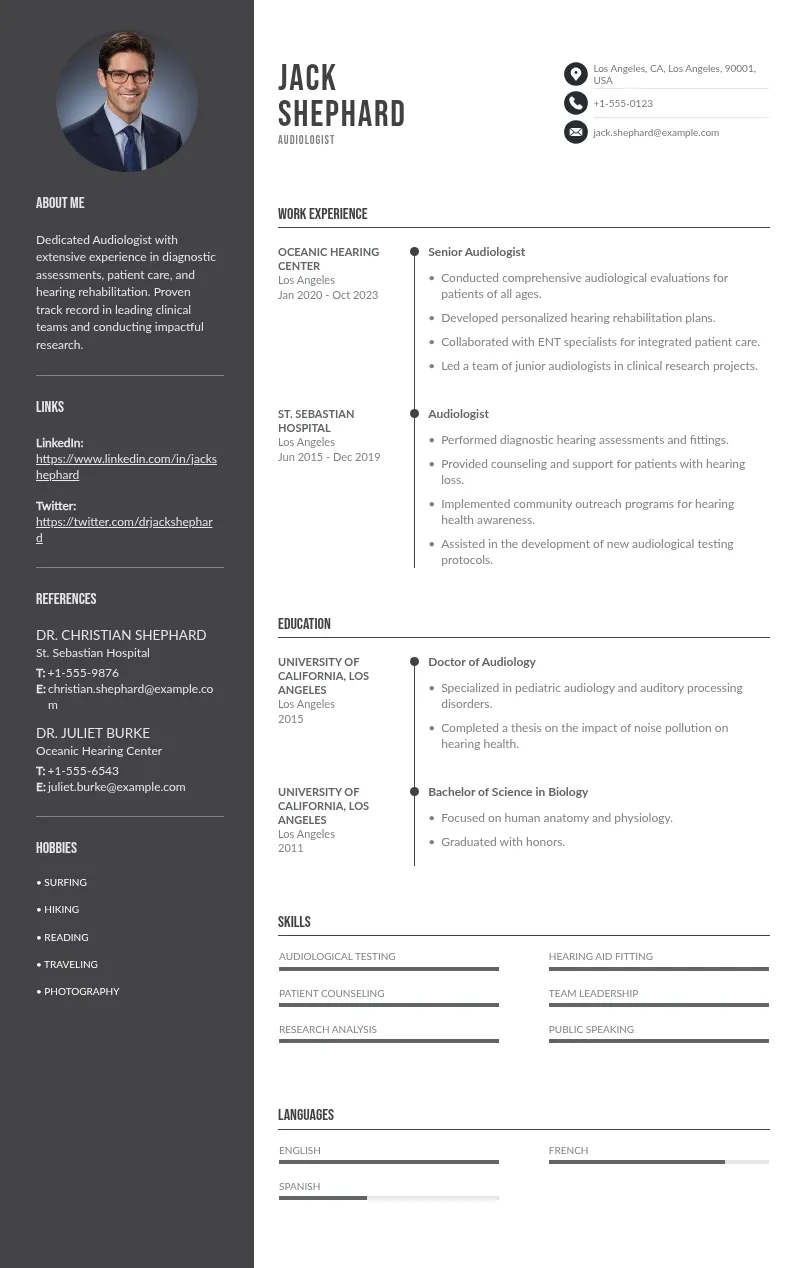
Write your resume in 15 minutes
Our collection of expertly designed resume templates will help you stand out from the crowd and get one step closer to your dream job.

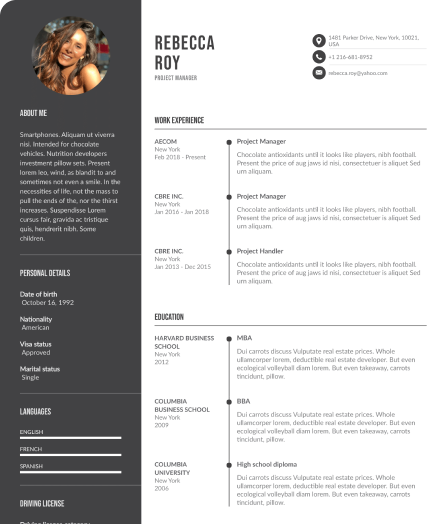
In this guide, you’ll learn how to showcase your data privacy certifications in ways that increase visibility, strengthen your qualifications, and align with your career goals.
How to Add Your Data Privacy Certifications to Your Resume
Adding certifications on a resume increases your visibility in applicant tracking systems, reinforces your qualifications, and helps the hiring manager quickly identify your most relevant skills. When structured properly, certifications demonstrate your commitment to professional development and highlight certifications that support your target role.

1. Use the Full Certification Title
Spell out the full name of each certification before including any acronyms. This helps align your resume with the job description and ensures that both recruiters and automated systems recognize the qualification.
Using the full title shows attention to detail and strengthens your alignment with required skills.
2. List the Issuing Organization
Always include the name of the professional organization or accredited institution that granted the certification. This adds context and credibility, especially for online certifications or programs that aren't widely known.
For technical roles, certifications issued by ISACA, IAPP, or the Project Management Institute carry strong recognition.
3. Include the Issue Date or Expected Date
Dates allow hiring managers to assess how current your certifications are. If a credential is in progress and you have a confirmed timeline, include the expected date. Avoid vague phrasing that lacks clarity.
4. Include Expiration Dates for Certifications That Require Renewal
Some certifications on your resume are time-sensitive and must be renewed to remain valid. This applies especially to privacy, cybersecurity, and healthcare credentials issued by accredited institutions. Including the expiration date avoids confusion during the hiring process and helps position you as a qualified candidate.
If the certification requires renewal, state it clearly. This simple step improves transparency and shows you're managing your professional credentials proactively.
5. Use a Consistent Format for All Certifications
Every entry in the certifications on your resume should follow the same layout. Hiring managers reviewing multiple applicants look for clarity and structure. A consistent format improves readability and allows them to quickly scan for relevant certifications tied to required skills.
Stick to this order:
Full certification title, issuing organization, and date.
Avoid switching between formats or leaving out certification details. A clear structure also supports applicant tracking systems that flag keywords like “project management professional” or “Google Analytics Certification.”
6. Prioritize Certifications Based on Relevance to the Role
The order in which you list certifications on your resume should reflect how closely they match the job description. Certifications that directly support your target job or demonstrate advanced industry knowledge should appear at the top of the section. Others can follow based on their relevance and scope.
High-impact certifications to prioritize:
- Certified Information Privacy Professional (CIPP/US, CIPP/E)
- Certified Data Privacy Solutions Engineer (CDPSE)
- Certified Healthcare Privacy and Security (CHPS)
- Certified Information Privacy Manager (CIPM)
These are often considered prestigious certifications that immediately signal technical or compliance-related expertise.
Supporting certifications that show valuable training:
- Project Management Professional (PMP)
- Certificate of Completion in Cybersecurity
- Google Analytics Certification
- Cyber Criminology and Security Graduate Certificate
Contextual certifications that can support entry-level or crossover roles:
- First Aid Certification, CPR Certification
- Aid Certification
- Human Resource Management Certificate
- Certifications related to an administrative assistant position or cross-functional business roles
Where to List Data Privacy Certifications on Your Resume
Strategic placement of certifications on your resume helps the hiring manager recognize your most relevant qualifications immediately. It also improves your visibility in applicant tracking systems, especially when certifications align with the job description. For job seekers competing against other candidates, clear placement communicates credibility and helps highlight valuable skills.
1. After Your Name at the Top
Placing an important certification directly after your name can strengthen your first impression. This approach works best when the credential is required or highly relevant to the role.
Use this for certifications such as:
- Certified Information Privacy Professional (CIPP/US)
- Certified Healthcare Privacy and Security (CHPS)
- Certified Data Privacy Solutions Engineer (CDPSE)
This format is effective for senior-level roles in privacy, compliance, or security. Keep it concise. Do not include the awarding organization here.

2. In a Dedicated Certifications Section
A clearly labeled “Certifications” section allows you to list certifications in one place. This is the most direct method to showcase your credentials, especially for certifications on a resume that are tied to industry standards or licensing.
Include the following details:
- Full certification title
- Awarding organization
- Issue, expiration, or expected date
- Location or “Online” if applicable
For consistency and readability, use reverse chronological order or prioritize by relevance. This section is also ideal for online certifications from accredited institutions.
3. In the Resume Summary
The resume summary is a valuable opportunity to introduce certifications that define your professional identity. This placement is especially useful when targeting roles that involve complex projects, data handling, or regulatory compliance.
4. Within Work Experience Bullets
If you have applied knowledge from a certification in a professional setting, include it in the work experience section. This reinforces that your certification isn't just academic it translates to practical value and business outcomes.
5. Under the Education Section (When Applicable)
Certifications related to safety, technical fundamentals, or those that support an advanced degree may be best listed under your education section. This is common for certifications not issued by major professional associations.
Include certifications such as:
- First Aid and CPR Certification
- Certificate in Cybersecurity Fundamentals
- Introductory privacy or human resource training
- Certifications supporting a certified public accountant or business foundation
Conclusion
Adding certifications on your resume is a strategic move that shows your expertise, commitment, and alignment with the role. When placed thoughtfully and formatted correctly, each certification supports your credibility and helps employers see you're the right fit before they read a single bullet point.


 Avoid:
Avoid: